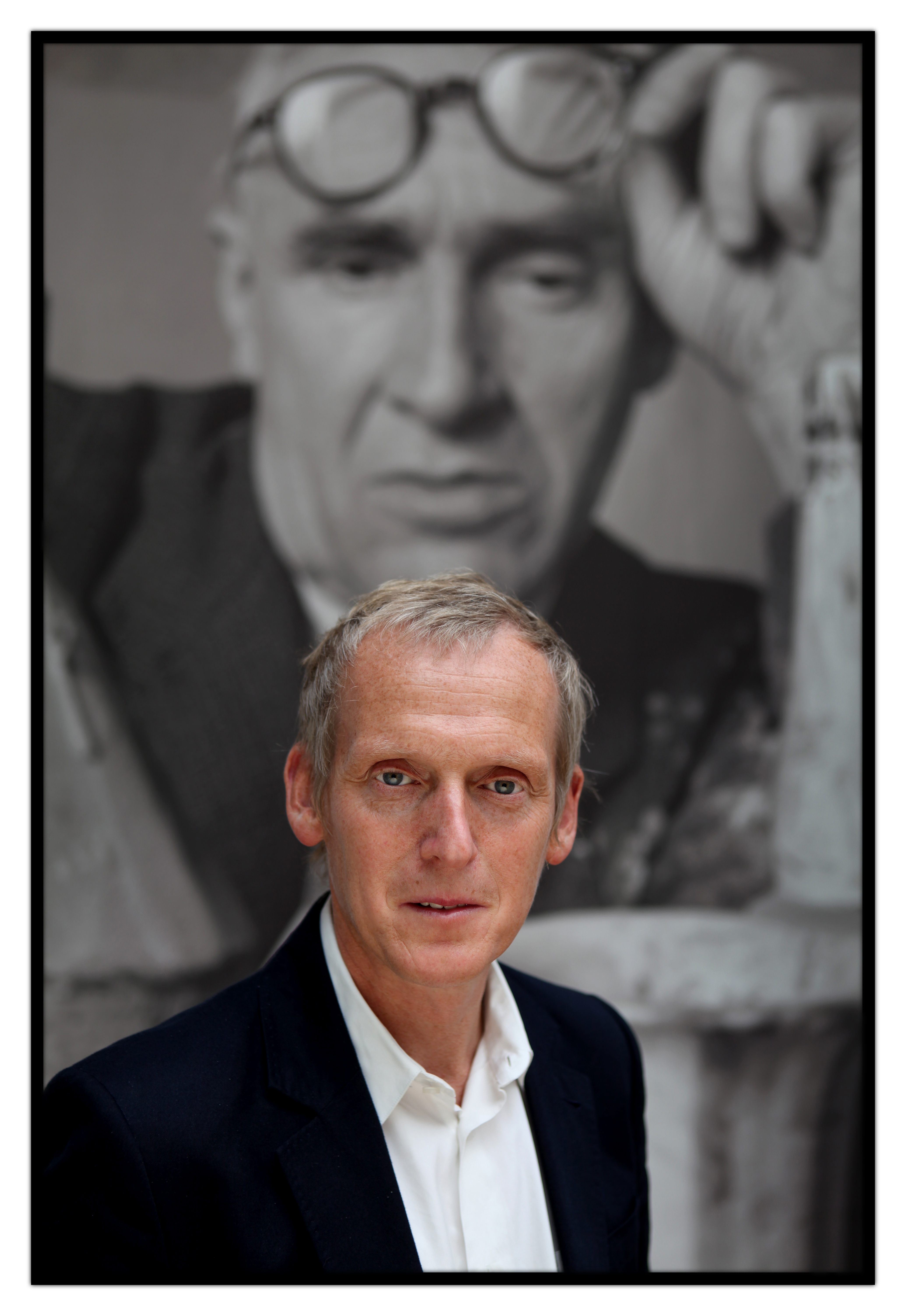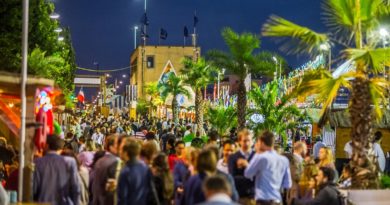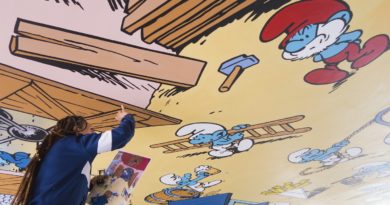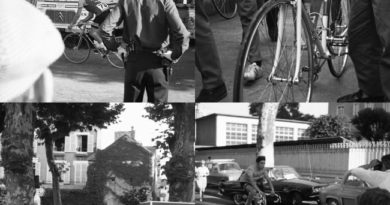« In order to understand BOZAR, you need to know a little bit more about its history » says Paul Dujardin
Paul Dujardin is a man who has changed the cultural and social landscapes in Brussels. As the CEO and artistic director of BOZAR Centre for Fine Arts, he has advocated for a diverse and vibrant cultural center where visitors can rejoice, think and discuss. Behind his reflective demeanor, he’s on a quest for the treasures found in the interactions between disciplines, the fragile exploration of new artistic forms, it’s in his creative DNA to see beyond the established norms. Since 2002, he has reshaped the vision of BOZAR by investing in one of Brussels architectural jewels, the Centre for Fine Arts, has overseen the re-inauguration of the historical organ, as well as the creation and nursing of unique partnerships. The rich intellectual offer he has brought to the city is, by any measure, outstanding. This spring he talks to Brussels Express about how he sees BOZAR today and in the future.
Could you tell us about what the Centre for Fine Arts means to you, its history, the building, the impact it has had on society?
In order to understand BOZAR, you need to know a little bit more about its history. Around the turn of the last century there was a need for an exhibition space for contemporary art in Brussels. Organizing temporary exhibitions was not a key priority for the existing Royal Museum of Fine Arts. Additionally there was a need for a multidisciplinary approach: uniting various disciplines including art and music. The founding fathers deliberately decided that the CFA would not be a collecting museum. Emancipated from a permanent collection the CFA was designed to be flexible, outward looking and oriented towards the present and the future rather than anchored only to the past. Today this is both an advantage (especially in terms of flexibility) and a disadvantage: e.g. since it poses various marketing and communications challenges as well as more operational difficulties when negotiating loans with other museums.
The CFA became the place to be for contemporary art, thanks to the efforts of various actors from civil society, especially in times of upheaval or profound social change such as the 30’s after the stock exchange crash of 1929 or in the 50’s & 60’s after the Second World War. It is my strong belief that a cultural institution does not exist in a vacuum, nor does it perform a static function in society. The definition of the role of museums and concert halls has evolved a lot since the 19th Century and is of course still evolving today. As society changes, so must the public institutions that serve them, that is in essence their role. Today, art museums, Kunsthalles, Concert Halls have a lot in common: a constant need to innovate and respond to social change, to continue to be relevant and prove their valuable position in society.
How does BOZAR operate financially? To the extent of what you are able to share: how much of the inflows are from events, donors, government grants, etc? What are the main operational and managerial challenges you have faced, and continue to face?
To be clear: BOZAR and the Centre for Fine Arts is not the same. BOZAR is the label for the cultural activities our teams are (co)producing. You have in fact three different layers: the company, the building and the cultural project. Since 2002 we are a public limited company. This means that we have the same decision-making bodies as a private companies. We are more autonomous than for instance the federal museums. This comes with a higher responsibility, also to differentiate our revenues. As a cultural company the Centre for Fine Arts is a good example of a public private partnership. The federal management agreement is the contract with our main shareholder: the federal state. The structural subvention, 45% of our total revenues, partly covers the human resources and the costs of the building. So the biggest challenge is to find every year the other 55%. I am very proud that ticketing is the largest private revenue. It means that the public is our main private supporter. Sponsoring and patronage follow. A growing part of our income is coming from hall rental. In the latest years, we are putting more effort in working with all kinds of foundations. But our main model is coproduction. The most important challenge is to convince people to collaborate with and thus build trust. You also have to live up to the highest standards. Another challenge are the major investments still to be done in our building: the Victor Horta Building is an architectural masterpiece, but in order to keep it conform to the modern rules and regulations a lot of investments have to be done every year. Since 2002, more than 54 million have been invested in the renovation of the building (energy efficiency and security). More work remains to be done in the coming years in order to make the building even more accessible and user-friendly for the audience and the artists.

You studied art history and archeology, were involved mainly in musical-oriented projects. Why did you take the helm of Bozar? Of what you had set yourself to achieve, what has come to fruition, what hasn’t yet happened, what did you discard half-way realizing it was not what you thought or wanted?
True, I’m a generalist. Every day I try to reinvent myself and learn something from people with a different expertise, be it artists, scientists, decision makers, diplomats or entrepreneurs. It’s so easy to agree when you remain in the same small club. I started in the field of classical and contemporary music, in fact in a society that tries to turn young people into music lovers (‘The International Federation of Youth and Music’). From my childhood onwards I have developed a love for the visual and the performing arts. So which ship could I better try to steer than the Centre for Fine Arts in Brussels? My main talent is to bring people from different fields together, and to try to make unexpected connections. Also with other sectors: education, research, sciences, diplomacy, geopolitics, etc. When I entered the Centre for Fine Arts in 2002 as director general we had to start almost from scratch. The company was virtually broke, so we reformed the organisation juridically. We had to connect the different teams and to diversify the profiles. We had to renovate the building. Without a descent roof and climate system etc. you cannot work with high level museums and get the necessary loans. From a Belgian institute BOZAR is turning into a European house of culture in a superdiverse city such as Brussels and a globalising world. I am not the person to discard things half-way. To write a classic novel such as Anna Karenina you need strong story lines and inspiring characters. It takes a while to get all the dots connected. Our program has become much more diverse and layered.
In 2016 you were awarded the Lobby Award for Brussels Leader of the Year for your work in re-energizing Brussels. Diversity has been at the core BOZAR’s mission (« a city within a city »). Has an institution like BOZAR succeeded in bringing out the voices of the most vulnerable in society, the underrepresented? What has been achieved, what could be improved and how?
The diversification of our audience remains a work in progress and a priority for the coming years. If today we are able to reach a very large and diverse audience, this is in great part thanks to our large network of partners. Last year for example, we organised the Yo exhibition on the history of Hip Hop and urban culture in Brussels. The project really succeeded in bringing a ‘new’ audience to BOZAR thanks to the community organisations that persuaded their members to come to BOZAR and participate in the many summer activities.
What would you like to see accomplished in 2018 and until the end of your third term?
BOZAR, in collaboration with a large number of partners, is working on a new contemporary art initiative for Brussels and Europe. The European project is in jeopardy and the citizens of Europe demand action. Europe needs a common project and the existing tools are insufficient. The world is again experiencing a moment of profound change brought on by globalization. We think art is the best tool to address this shift because it is both exclusive and inclusive, capable of enlarging the debate and changing the discourse and accommodating conflict in a constructive process. The ambition is to create a recurring artistic city-wide festival in Brussels, the capital of Belgium and de-facto administrative and symbolic capital of Europe. The first edition is to take place in the spring-summer of 2019.



